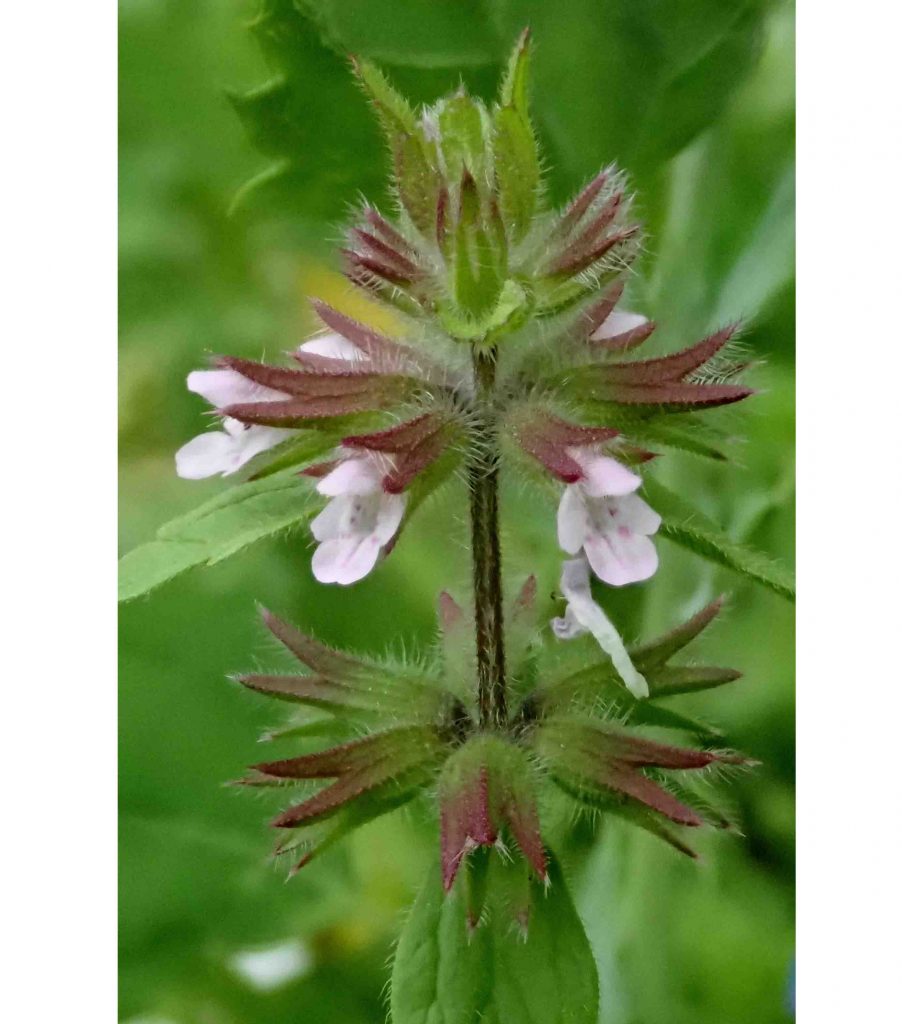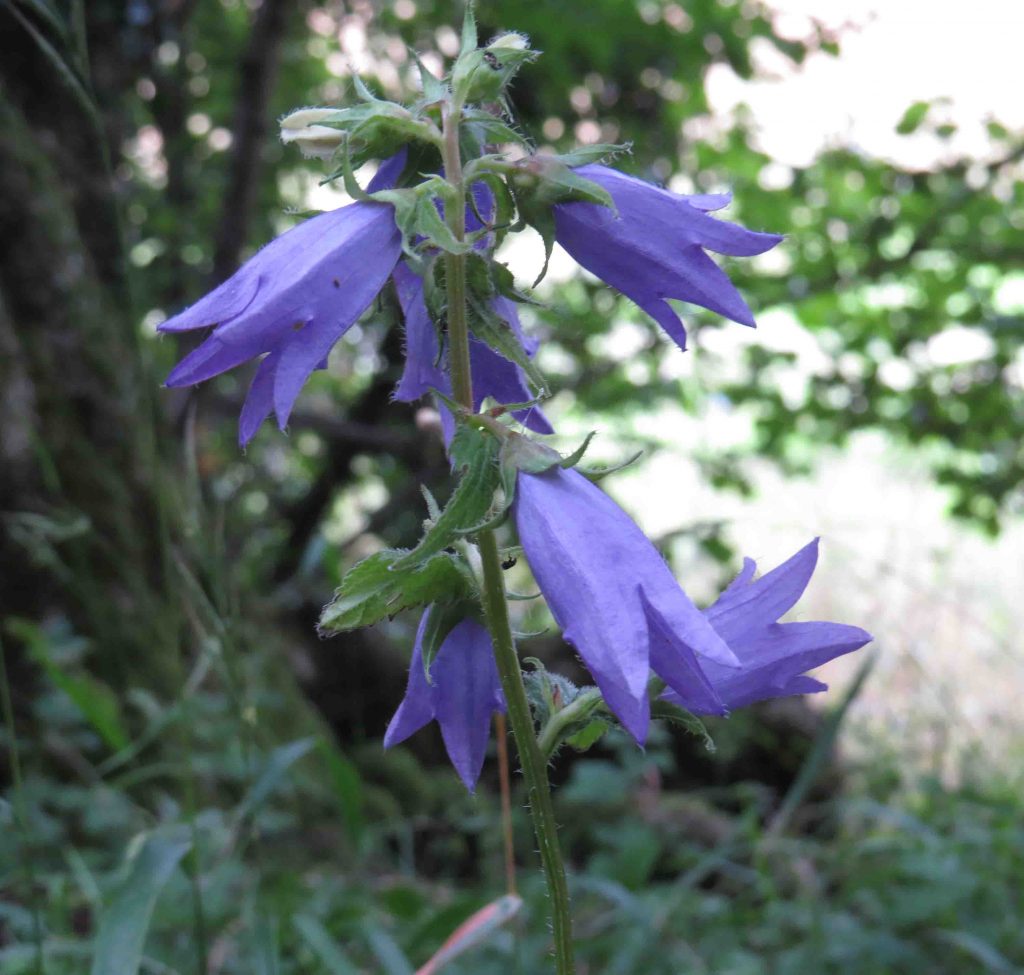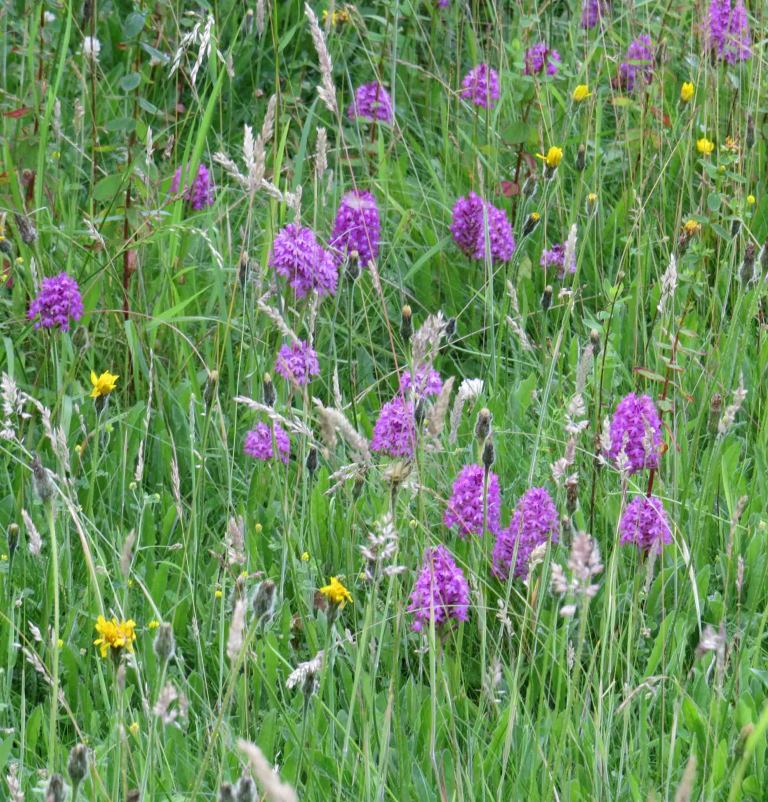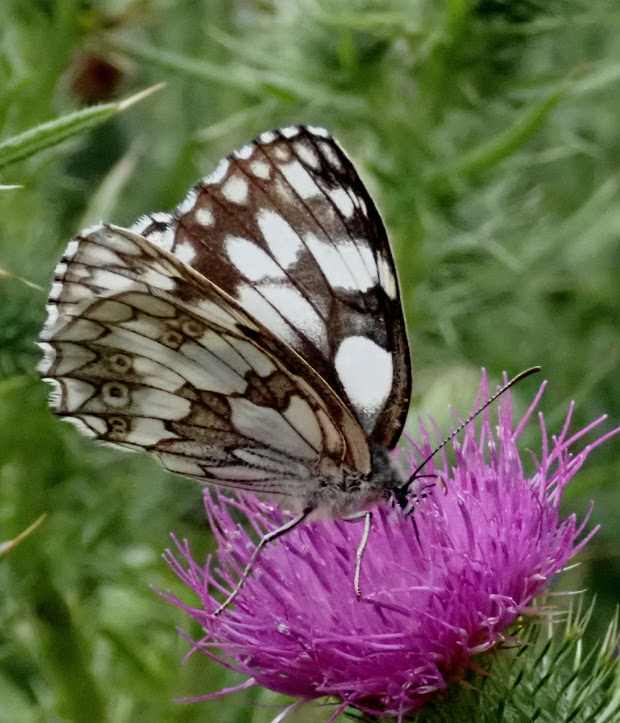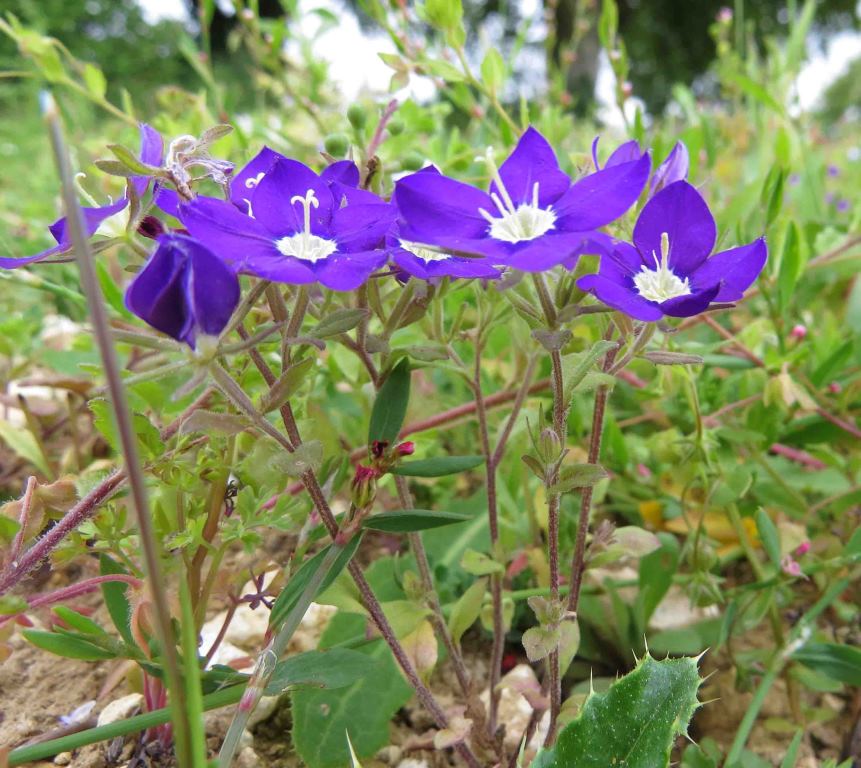On Wednesday 15 July, Fiona Brown organised a circular walk, starting from the Vyne pub at Hannington. One person just came on the pre-walk, five members set off at 9:45 in a group led by Fiona and another six, led by Julia Cooper, followed at 10:15. The route led north-eastwards along a track through fields with distant views, including recognisable landmarks such as AWE Aldermaston and the Green Park wind turbine. Beside the track were Chicory plants with striking blue flowers, together with tall flower heads of Wild Carrot and Hogweed. The Hogweed flowers were predominantly white, but there were a significant number of pale pink specimens and one striking purplish flower head. Other sightings included Red Bartsia and Musk Mallow. Skylarks and Linnets flew over the fields and three Hares were seen. There was a short diversion along a track to one side to admire particularly flower-rich verges, with Common Knapweed, Lady’s Bedstraw, Field Scabious, Common Bird’s-foot-trefoil and Hoary Plantain, together with Marbled White and Meadow Brown butterflies.
The route then turned south-eastwards. Gatekeeper, Red Admiral, Peacock and Small White butterflies flitted across bramble blossom beside the path, wild honey-bees flew in and out of a nest in a tree and a swarm of bees was spotted by the second group. The path ran through a stretch of woodland where flowers of Yellow Pimpernel and Enchanter’s Nightshade were seen. Emerging from the wood, rich purple spikes of Marsh Woundwort attracted the group’s attention to an interesting collection of plants in the field beside the path, perhaps sewn as a mix for pollinators and birds. They included the rare Field Woundwort, plus Sun Spurge and a number of other plants. There was much activity in the fields on the other side of the path. One tractor was cutting grass for silage, another gathered it up into long rows and a third scooped it up into a big trailer. 13 Red Kites were flying over the field. The path continued to Ibworth, where House Martins were nesting on farm buildings. A Greenfinch was singing from the top of a tall Ash tree and it was joined by a significantly smaller Goldfinch. The walk continued southwards along a quiet lane, with Wayfaring-tree, Guelder-rose and Spindle in the hedge, and Wild Basil, Hedge Bedstraw, Upright Hedge-parsley and Bladder Campion on the verge. Delicious cherries on the tall trees beside the lane were sampled and a Robin’s Pincushion was inspected.
The next track led south-westwards through a narrow strip of woodland, with trees including Beech, Ash, Hazel and Field Maple. An enormous old multi-stemmed Ash was growing beside the path. Tall pale blue spikes of Nettle-leaved Bellflower grew up through the ground cover of Dog’s Mercury and there were a number of plants of Solomon’s-seal, with berries dangling below the arched stems. The next path ran north then north-west through Warren Bottom Copse, where Wood Millet, Wood Mellick and Wood Sedge were identified. The path emerged at a wide open ride with wonderful chalk grassland vegetation. The initial impression was of yellow, with a carpet of Rough Hawkbit, plus Wild Parsnip and Square-stalked St-John’s-wort. On the south side of the ride were many Pyramidal Orchids, plus tall spikes of Common Valerian. Salad Burnet, Common Rock-rose, Field Scabious, Eyebright, Goat’s-beard and Dwarf Thistle were amongst the other sightings here. As the clouds thinned a little, Ringlet and Marbled White butterflies took to the wing. Towards the end of the ride, Greater Knapweed, Knapweed Broomrape and Hairy St John’s-wort were found. The next track climbed gently next to a field of oil seed rape. In the field margin were an interesting collection of arable weeds, including Dwarf Spurge. Conditions continued to brighten, and in the final section of track around the edge of another field, Large White, Essex Skipper, Red Admiral, Green-veined White and a mating pair of Common Blue butterflies were seen. Rough Chervil was in flower beside the path. The route then led along a short stretch of lane to the pub, where tables were reserved in the garden. After lunch, some members of the group drove to a nearby farm where an arable field margin had a wonderful collection of flowers, including Small Toadflax, Large Venus’s-looking-glass, Field Madder, Round-leaved and Sharp-leaved Fluellen and Common Poppy.
Pictures by Fiona Brown and Ken White


